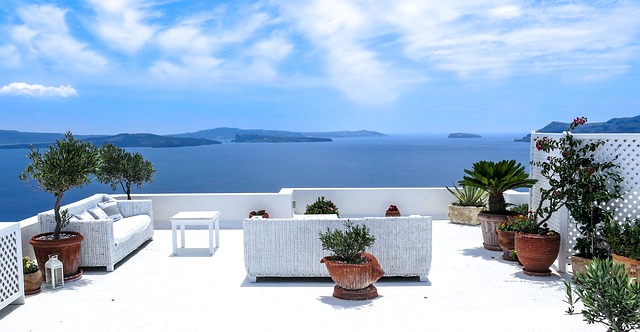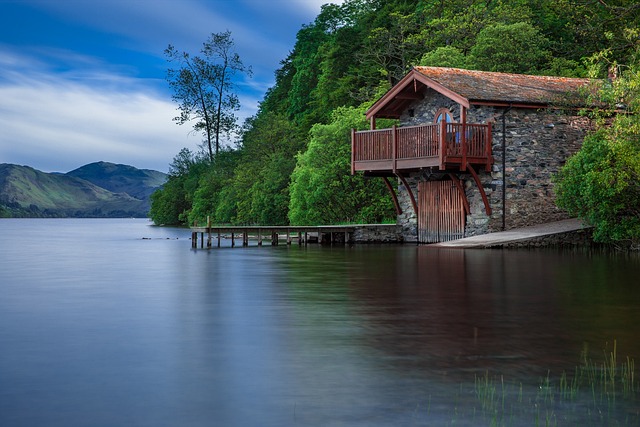A terrace is a flat, outdoor area, often on the top floor, while a balcony is a projecting platform attached to a building, accessible from rooms at any level.
TL;DR Terrace Vs. Balcony
A terrace is a flat, open space located on the ground or rooftop level of a building. It often covers a larger surface area and can be used for various activities such as gardening, hosting gatherings, or simply appreciating the surrounding views. Terraces provide more flexibility in terms of design possibilities and usage options.
A balcony is typically an elevated platform attached to a room or floor within a building. It protrudes from the main structure and offers smaller dimensions compared to terraces. Balconies are primarily designed for personal use – allowing individuals to step outside without having to leave their living space.
What is a Terrace?

A terrace is an outdoor, elevated, flat surface usually attached to a building or on the top floor, offering open space with panoramic views. Terraces can vary in size, and they are commonly used for recreational purposes, dining, or gardening.
Often associated with luxury, terraces provide an elevated and open environment, allowing residents or guests to enjoy outdoor activities while being elevated above ground level.
Terraces can be designed with various materials, landscaping, and amenities, creating versatile and aesthetically pleasing spaces for relaxation and social gatherings.
What is a Balcony?

A balcony is a projecting platform attached to the exterior of a building, typically with a railing, accessible from rooms at various levels. Designed for outdoor access, balconies are smaller than terraces, providing a semi-private space for relaxation or small gatherings.
Balconies often enhance living spaces, offering a connection to the outdoors while allowing residents to enjoy views or fresh air.
They come in various styles, materials, and sizes, and their popularity extends to apartments, high-rises, and homes, providing a charming and accessible extension of indoor living to the exterior.
Terrace Vs. Balcony – Key differences
| Feature | Terrace | Balcony |
|---|---|---|
| Location | Often on the top floor or rooftop of a building | Attached to the side of a building, at any level |
| Structure | Usually an outdoor platform or flat surface | Typically a protruding platform with railings |
| Size | Generally larger, offering more open space | Smaller in comparison, may have limited space |
| Access | May have direct access from inside the building | Accessible from a room or living space |
| Usage | Versatile; can be used for various purposes | Usually for relaxation, small gatherings |
| Privacy | Might have more privacy depending on location | May have limited privacy, especially on lower floors |
| Planting/Gardening | More suitable for gardening or planting | Limited space for planting, may have potted plants |
| Installation | Requires more structural support and planning | Generally easier to install, attached to the facade |
| View | Can offer panoramic views, especially at elevation | View may vary depending on the building's location |
| Popular Locations | Rooftops, penthouses, top floors of buildings | Apartments, high-rises, upper floors of buildings |
Advantages of Having a Balcony
- Outdoor Retreat: Balconies provide a small outdoor space for relaxation, offering a retreat from indoor living with fresh air and natural light.
- Views and Scenery: Residents can enjoy scenic views and the surrounding environment, adding aesthetic value and a connection to the outdoors.
- Social Space: Balconies offer a semi-private space for small gatherings, socializing, or enjoying meals in an open-air setting.
- Extension of Living Space: They extend living areas, creating an additional zone for reading, working, or simply unwinding, especially in compact living environments.
- Ventilation and Light: Balconies enhance natural ventilation and bring in sunlight, contributing to a healthier indoor environment.
Advantages of Having a Terrace
- Panoramic Views: Terraces often offer expansive and panoramic views, providing residents with an elevated perspective of their surroundings.
- Versatility: Terraces are versatile spaces that can be used for various purposes, including outdoor dining, gardening, social gatherings, or simply as a peaceful retreat.
- Outdoor Living: Terraces extend living spaces outdoors, allowing residents to enjoy fresh air and natural light without leaving their homes.
- Entertaining Guests: Larger terraces provide ample space for entertaining guests, hosting gatherings, or special events, enhancing social experiences.
- Gardening Opportunities: Terraces offer opportunities for gardening, allowing residents to cultivate plants, flowers, or even create a small vegetable garden.
Image Credits
Featured Image By – Frank Winkler from Pixabay
Image 1 By – Didiwo from Pixabay
Image 2 By – 12138562 from Pixabay








